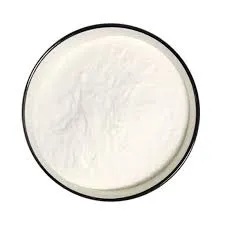
Nov . 11, 2024 05:24 Back to list
Exploring the Benefits and Applications of Hydroxypropyl Methylcellulose in Various Industries
Understanding Hydroxypropyl Methylcellulose (HPMC) Properties, Applications, and Benefits
Hydroxypropyl methylcellulose (HPMC) is a versatile, non-ionic, cellulose-based polymer that has gained significant attention across various industries due to its unique properties and functionality. Derived from natural cellulose, HPMC is created through a chemical modification process that introduces hydroxypropyl and methyl groups into the cellulose structure. This modification not only enhances the solubility of cellulose in water but also improves its performance in multiple applications.
Properties of HPMC
One of the most notable characteristics of HPMC is its excellent viscosity control. In aqueous solutions, HPMC can form a gel-like consistency that can be manipulated depending on concentration and temperature. This property makes it an ideal thickening agent in formulations. Additionally, HPMC is stable over a range of pH levels and temperature variations, allowing it to be used in diverse environments.
HPMC is also recognized for its non-toxic nature, making it suitable for use in food, pharmaceutical, and cosmetic products. As a biodegradable polymer, it aligns well with growing sustainability trends, as it can be broken down naturally without harming the environment. It is also well-tolerated by human bodies, contributing to its widespread adoption in dietary supplements and medications.
Applications of HPMC
The versatile nature of HPMC allows it to be utilized across various industries
1. Pharmaceuticals In the pharmaceutical sector, HPMC is primarily used as a binder, coating agent, and thickener in tablet formulations. Its ability to control the release of active pharmaceutical ingredients (APIs) makes it valuable in controlled-release oral medications. Additionally, HPMC is employed in ocular formulations due to its excellent lubricating properties.
2. Food Industry In food products, HPMC serves as a food additive, providing texture and stability. It is commonly used in gluten-free baking as a substitute for gluten, helping to retain moisture and improve the structure of baked goods. Additionally, HPMC is employed as a stabilizer in sauces, dressings, and dairy products, improving their viscosity and shelf life.
hpmc hydroxypropyl methylcellulose

3. Cosmetics and Personal Care HPMC is a popular ingredient in the cosmetic industry due to its ability to enhance product viscosity and stability. It is found in lotions, creams, shampoos, and conditioners, helping to improve the application and feel of these products. Its film-forming properties also contribute to the durability of cosmetic formulations.
4. Construction In construction, HPMC is used as an additive in cement and mortar mixtures to enhance workability, adhesion, and water retention. This application improves the performance of construction materials and provides better durability in building projects.
5. Paints and Coatings HPMC is employed in the production of water-based paints, where it acts as a thickening agent and stabilizer. Its ability to improve the flow and appearance of paint products makes it highly valued in the coatings industry.
Benefits of HPMC
The benefits of incorporating HPMC into various products are numerous. Its ability to provide thickening and stabilizing properties enhances the texture and consistency of formulations, contributing to improved consumer experiences. Furthermore, HPMC’s compatibility with a wide range of ingredients allows formulators to create effective products without compromising performance.
In addition to its functional benefits, the use of HPMC aligns with health and environmental considerations. Its non-toxic nature and biodegradability make it a safe choice for consumers and a responsible option for manufacturers seeking sustainable solutions.
Conclusion
In summary, hydroxypropyl methylcellulose (HPMC) is a multifaceted polymer that offers a wealth of advantages across diverse industries. Its unique properties, such as viscosity control, stability, and biodegradability, make it an essential ingredient in pharmaceuticals, food products, cosmetics, construction, and paints. As industries continue to prioritize health and sustainability, the role of HPMC is likely to grow, solidifying its place as a crucial component in innovative formulations. Whether in a dietary supplement, a delicious gluten-free loaf of bread, or a luxurious cosmetic cream, HPMC continues to demonstrate its remarkable versatility and effectiveness.
-
Versatile Hpmc Uses in Different Industries
NewsJun.19,2025
-
Redispersible Powder's Role in Enhancing Durability of Construction Products
NewsJun.19,2025
-
Hydroxyethyl Cellulose Applications Driving Green Industrial Processes
NewsJun.19,2025
-
Exploring Different Redispersible Polymer Powder
NewsJun.19,2025
-
Choosing the Right Mortar Bonding Agent
NewsJun.19,2025
-
Applications and Significance of China Hpmc in Modern Industries
NewsJun.19,2025







